 
|
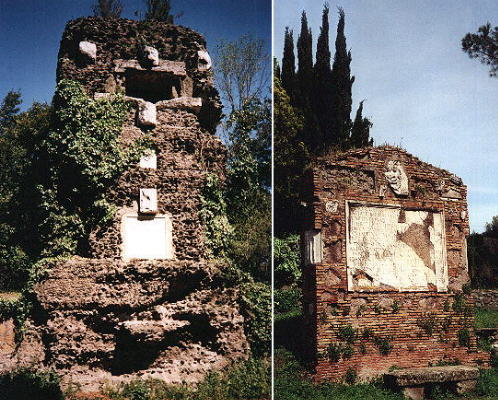 | ||
The tomb of Cecilia Metella is decorated by a frieze showing skulls of oxen, hence its medieval name of Capo di Bove (Oxen's head). The name passed also to this tall ruin which marks the starting point of the XIXth century excavations of Via Appia.
This section is flanked by several tombs and other funeral monuments (on the right the Tomb of the Children of Sextus Pompeus Justus with a long inscription).
Sepolcro Rotondo
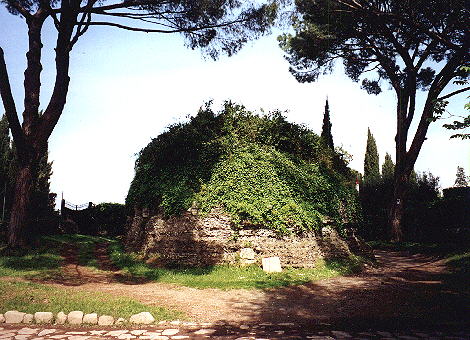 | ||
Many tombs had a round shape (both Augustus and Adrian had round tombs) and today little mounds
flank Via Appia. This Sepolcro Rotondo retains the four niches for the statues of the dead.
Temple of Jupiter
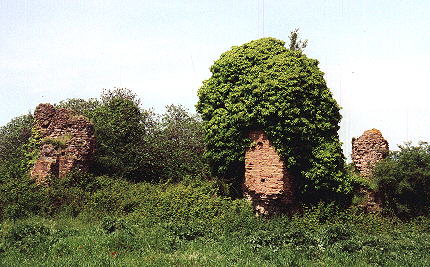 | ||
Via Appia was so crowded with tombs and other monuments that some of them were built behind the
first line and now are in the fields to the sides of Via Appia. This picturesque Temple of Jupiter
lies to the left of Sepolcro Rotondo.
Tomb of the Rabirii
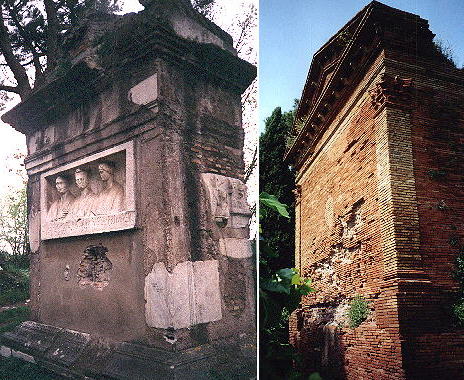 | ||
The most simple tombs, instead of statues, had just the busts of the dead often with a bust
of a god. The background of this page shows the busts of the Rabirii family with the goddess Isis (who is shown also in the icon of this page).
Their tomb is near the Vth mile of Via Appia in a particularly interesting spot.
Romans excelled
in the use of brickwork and a few tombs give clear evidence of their skills.
The Pyramidal Tomb
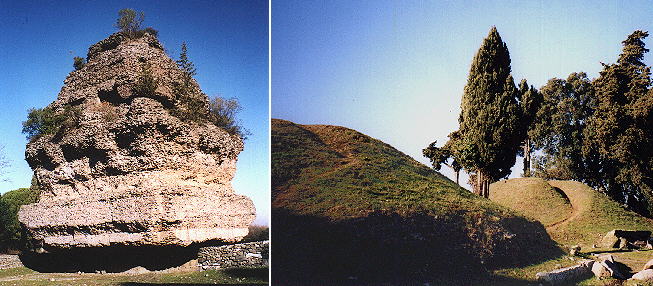 | ||
We know little about this large ruin of a likely pyramidal tomb. It inspired many painters and sketchers including Carlo Labruzzi who drew for Sir Richard Colt Hoare the principal monuments of Via Appia. Many tombs were completely robbed of their decoration and over time became just little mounds. Because of the lack of any inscription they were associated with heroes of the early Roman history, so these two mounds are called Tomba degli Orazi in memory of the two brothers who fell in the combat against the Curiazi.
Villa dei Quintili
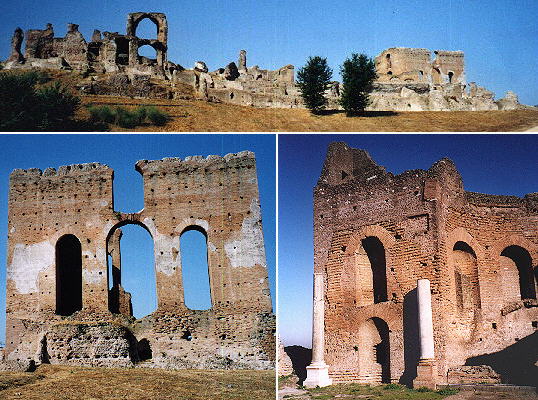 | ||
The wealthy brothers Quintilii built in the IInd century a large estate which included baths and a hippodrome. Their possessions were so vast that initially the excavated area was given the name of Roma Vecchia, as the ruins seemed to indicate the existence of a town rather than a villa. The picture shows part of the baths and the nymphaeum.
Casale Rotondo
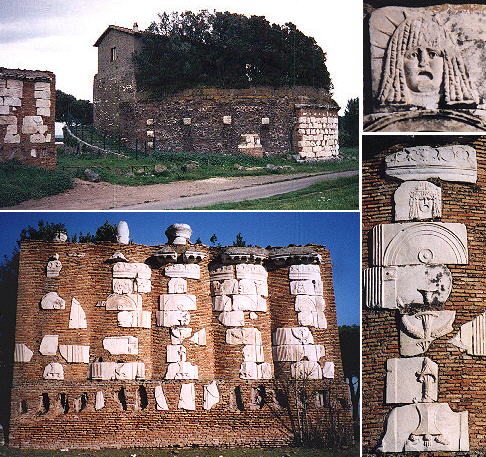 | ||
Casale Rotondo (round farm) ends this section of Via Appia. It is the largest tomb on Via Appia
and its top is occupied by a small farm. The decorations are reassembled on a nearby wall.
You can continue your journey on the Appian Way from Torre in Selci to Frattocchie.
You can see some more pines along Via Appia Antica in The Pines of Rome.
 or to
The Coats of Arms of the Popes or
to My Home Page on Baroque Rome or to
My Home Page on Rome in the footsteps of an XVIIIth century traveller
or to
The Coats of Arms of the Popes or
to My Home Page on Baroque Rome or to
My Home Page on Rome in the footsteps of an XVIIIth century traveller
All images © 1999 - 2003 by Roberto Piperno. Write to romapip@quipo.it
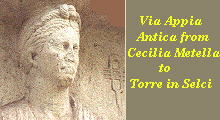 VIA APPIA ANTICA FROM CECILIA METELLA TO TORRE IN SELCI
VIA APPIA ANTICA FROM CECILIA METELLA TO TORRE IN SELCI